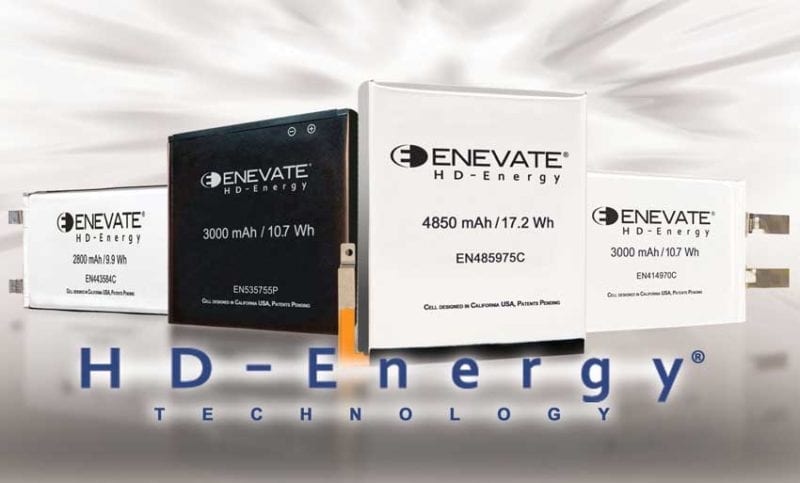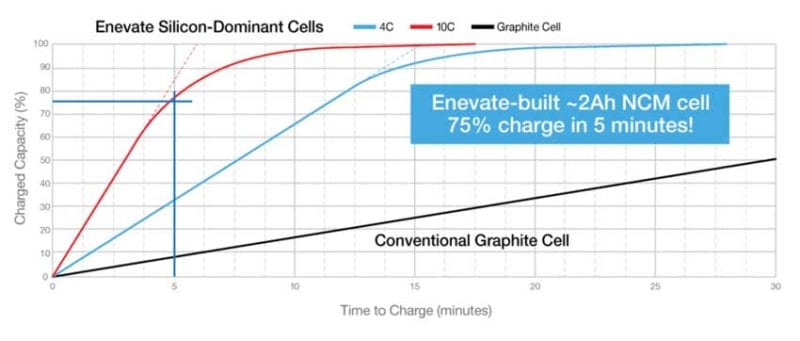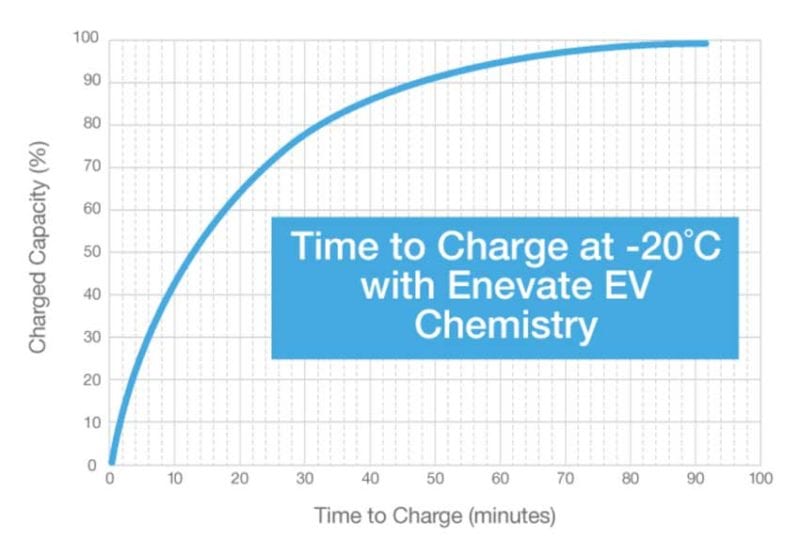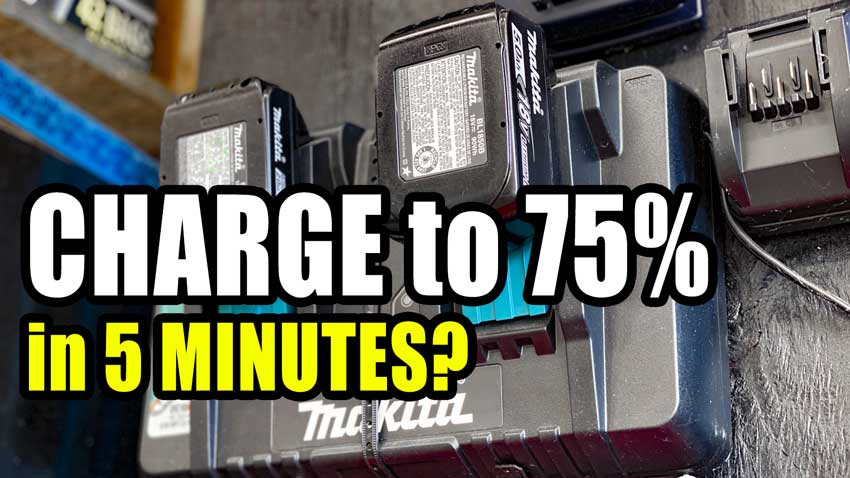Lithium-Silicon Batteries Poised to Replace Graphite and Create and Better, Faster, Cheaper Battery
We caught wind of some pretty crazy-sounding promises from lithium-silicon batteries. To get an idea if it’s just a bunch of hype or if it really is a viable future for lithium-ion batteries, we hopped on a call with technology innovation company, Enevate.
Table of Contents
What are Lithium-Silicon Batteries?
There are three basic components of a lithium-ion battery: the positive cathode, the negative anode, and an electrolyte to facilitate the passing of electrons. For products such as electric vehicles and power tools, we’re primarily looking at a nickel-rich cathode.
For the anode, today’s lithium-ion batteries typically use graphite. Lithium-silicon batteries simply swap it for a silicon-rich anode instead.

What Are the Advantages of Using Silicon in Batteries?
Silicon bonds rapidly and readily to lithium and it’s nearly 10 times more energy-dense than graphite, making all the difference in the world for a power tool battery.
It’s able to discharge at a 10C rate, meaning it’s capable of fully discharging in 6 minutes without damage to the cells. It’s a similar story on the charging side. You can safely charge the pack to 75% in just 5 minutes, though it needs to slow for the remaining 25%.

Let that sink in for a second. Imagine a cordless tool so power-hungry that it chews through an entire battery in 6 minutes paired with a charger that’s so fast, you can nearly cycle two batteries continuously at that rate. That’s a little bit of a stretch considering the pack needs about 17 minutes to fully charge, but you’re well over 90% in ten minutes.
There’s more to the story, though. Despite the incredibly fast charge/discharge potential, the overall lifespan of the lithium-silicon cells is similar to that of today’s lithium-graphite cells.
For our friends up north, there’s good news for you, too. This battery chemistry has both an operating and charging range of -4° F to 120° F, letting you work in much colder temps.

The higher energy density of silicon brings even more advantages. Right now, we have 1P 18V slim pack batteries capable of 4.0Ah, or 72 watt-hours of available energy. Switching to silicon could bring that same pack up to 5.9Ah (106.2Wh) – nearly 50% more runtime. Today’s 8Ah packs could be close to 12Ah and the big 12Ah packs could be nearly 18Ah!
That’s the kind of innovation that literally changes the way we think about cordless tools.
How Much More Expensive Will Lithium-Silicon Batteries Be?
There has to be some bad news, right? Only in the short-term. According to Enevate, the batteries will eventually be less expensive to produce. Current graphite-based batteries are at the height of production volume right now and lithium-silicon batteries will have to start at a much lower volume. However, the production cost of the batteries at the same volume level is cheaper with silicon.

Just like we saw with the launch of lithium-ion, the new batteries will be more expensive at the outset. As they gain more market share and the demand picks up, we’ll see those prices drop.
We can expect to see the first silicon-based lithium-ion batteries for power tools in as little as two years. They’ll likely start as a premium upgrade with a premium price tag before settling into a more affordable pricing structure.
Summary of Lithium-Silicon Battery Technology
- Lithium-silicon batteries move from graphite to silicon-rich anodes
- 10C discharge rates (capable of 6-minute discharging)
- Charging up to 75% in 5 minutes
- Works in and charges down to -4° F temperatures
- Close to 50% more energy in a 21700 cell
- Less expensive to produce
- Possible market entry as early as 2022
The Bottom Line
More power, more runtime, faster charging, cold-tolerant operation, and cheaper prices. That’s what lithium-silicon batteries promise in a nutshell. What’s exciting is that this isn’t a theoretical improvement. It’s a technology that’s on its way with buy-in from major players in industries that rely on battery technology, including Samsung and LG.
So enjoy where your cordless power tools are today knowing they’re going to be even better tomorrow.
For more information, be sure to visit the Enevate website.



